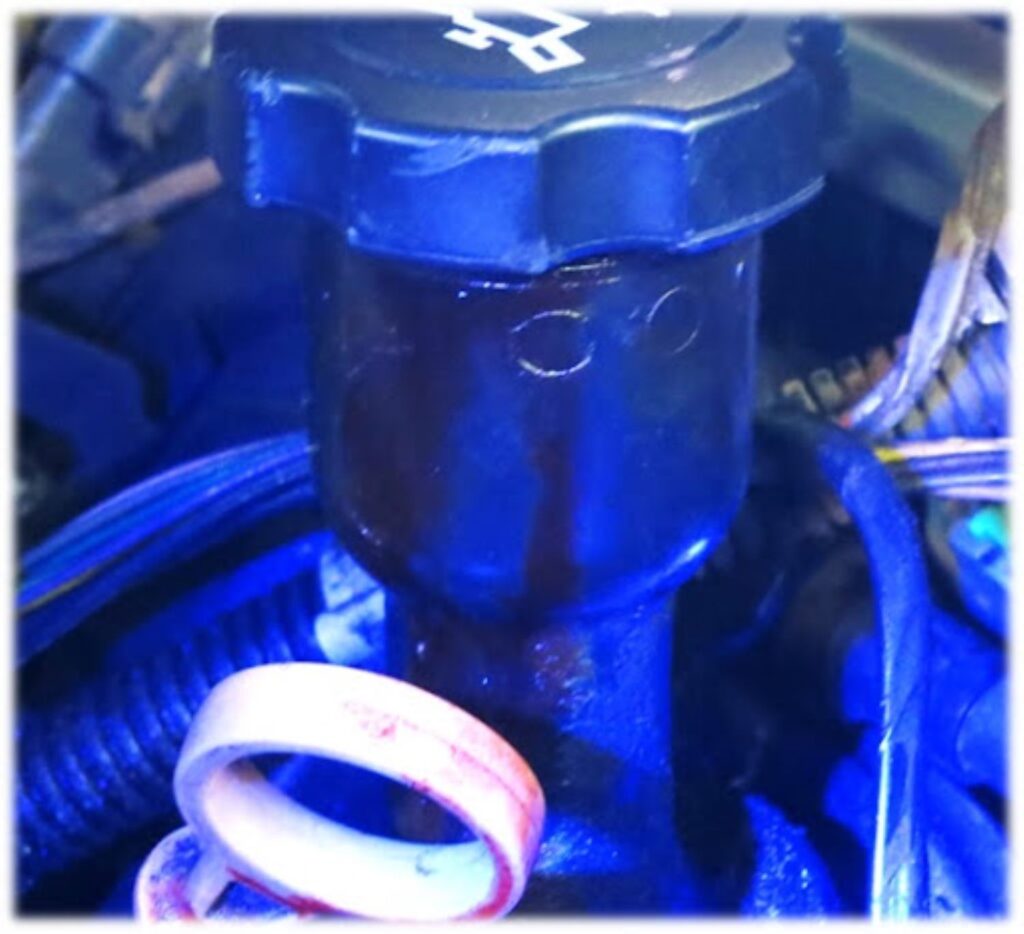Finding an oil leak can be a pain. There’s oil in multiple systems and parts of your vehicle, and it can be difficult to spot. We’ve compiled some tips and tricks for you to try when looking for that pesky oil leak.
Is it Oil?
If you notice any spots in your garage or a dampness in the components of your vehicle, the first thing to do is to see if it’s an oil leak or a different fluid leak. Your vehicle makes use of different liquids in its system, including fuel, antifreeze, brake fluid, washer fluid, and more. Before you hunt for an oil leak, make sure it’s oil you’re hunting for.
Oil Colors
To start identifying the oil leak, lay down some newspaper or a white plastic plate under your vehicle. Leave the vehicle alone overnight and check for droplets in the morning. Any amber-colored drops that have a thin and slippery consistency and a strong chemical odor are likely engine oil. Also look out for dark brown to black liquid with a gunky or gritty texture, which is what older engine oil in need of an oil change looks like.
Sticky green, bright orange, or pink liquid is antifreeze and needs to be kept away from pets. Non-sticky liquid in those colors is probably your windshield washer fluid. Finally, clear or yellowish fluid is brake fluid.
Fluid Level Checks
If you fail to find any droplets but still suspect a leak, you can try checking your vehicle’s fluid levels. Inspect the dipstick, which has a red or orange tab under the hood. If the level is low and it hasn’t been long since your last oil top-up, you’re likely looking at a leak. The same goes for the other fluids.

Preparing for the Search
Once you’ve identified the liquid as oil, you can conduct a proper search for the leak.
Look at the Engine
Take a look at the engine area with the engine off. If you spot oil splattered about, it might be a slow leak from the engine gaskets. Turn the engine on and observe again. An issue with a worn crankshaft or camshaft seal will lead to the engine spraying oil everywhere while it’s running.
Clean the Engine
To locate the exact cause of the leak, we recommend starting with a clean engine. Use a spray degreaser and a garden hose for this step, but make sure not to get the electrical components of your vehicle’s system wet. Wait until the engine dries before searching for signs of a leak. If you’re lucky, you’ll be able to spot the leak immediately.
Inspecting Hard-To-Reach Areas
You might need to get creative when inspecting the harder-to-reach areas under your hood. Prepare mirrors and a flashlight to check every nook and cranny in your engine bay.
How To Find Oil Leaks
To find the actual oil leak, you’ll need to look closely at the different parts of your engine. Keep these tricks in mind as you do:
What Does an Oil Leak Look Like
An oil leak won’t always be easy to see like a spot that’s dripping. It might be more subtle than that. Some things you can keep an eye out for are greasy stains around or underneath gasket seams and seals. Leaked oil attracts dirt so these spots will tend to be a little grimy.
Use Powder
Once you have an area you suspect of a leak, coat it liberally in powder. The leak should start to show itself, making it easier to locate. If you want to be extra efficient, try using aerosol powder like the type used to treat athlete’s foot. This type of powder will cling to the metal and coat it in a white haze.
Drive around until the oil leaks, preferably without driving over wet or muddy roads. The leak should appear along the powder as the oil slides down from the source. You can follow this path to the source of the leak. For leaks from the intake manifold gaskets, you might need to do this closer to the top of the engine. That being said, if the oil stream is too twisting to follow, using an ultraviolet (UV) trace dye will make things easier.
Use Ultraviolet Trace Dye
UV trace dye is what most professionals prefer to use when looking for a leak. This dye works on different liquids and can help locate multiple types of leaks. It shows up under ultraviolet light and you can simply look for the highest point where the dye appears to find the source of the leak.
For oil, simply follow the instructions on the dye’s packaging. To integrate the dye with the oil in your engine quickly, you can mix it with your top-up oil and pour that into the engine instead of pouring the mixture straight. This also tops up the engine oil depleted by the leak.


Common Oil Leak Locations
The most common areas you’ll find oil leaks are the valve cover and oil pan gaskets, timing chain cover, and the front and rear crankshaft seals. Check these areas first to see if you can spot a leak.
On older engines, heat might have caused the cork gaskets to harden and shrink or the rubber neoprene gaskets and seals to harden and lose elasticity. Because of how age affects these gaskets and seals, the older an engine is, the more likely these areas are to leak. Six or seven years in, the engine itself might start to leak oil.
Oil leaks can be a pesky thing to locate, but these tips should make doing so a little easier. Once you locate the leak, you can have it fixed at a licensed mechanic.
Any information provided on this Website is for informational purposes only and is not intended to replace consultation with a professional mechanic. The accuracy and timeliness of the information may change from the time of publication.































Using an Ultraviolet Dye is good information.
How about also checking the Head gaskets which commonly leak due to high cylinder pressure.